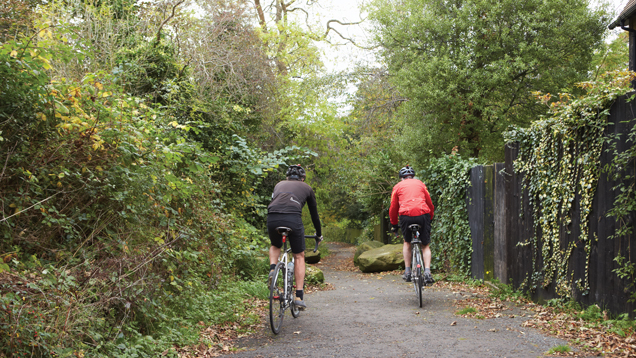Ontario to become more bike-friendly
 CREDIT: OMGIMAGES / THINKSTOCK
CREDIT: OMGIMAGES / THINKSTOCKMany students enjoy cycling as a healthy and cost-effective mode of transportation to get to and from Fanshawe College.
A recent amendment means that municipalities in Ontario will be able to approve and construct offroad bike paths and large-scale recreational trails more efficiently, according to a press release emphasising the environmental benefits of biking issued by the Ontario Ministry of the Environment and Climate Change.
The Municipal Engineers Association first requested the amendment. According to Jeff Bruin, landscape architect for the City of London’s Environmental and Parks Planning division, the Municipal Engineers Association proposed, “That recreation pathway projects done by municipalities,” encompassing “any pathway outside of the municipal right of ways could be done following the class environmental assessment (EA) process.”
According to the Ontario Government website, EAs are municipal infrastructure planning and approval processes ensuring that potential environmental effects are taken into account before a project begins. According to Bruin, these assessments “dictate when, where and why you would have a public meeting.”
“Historically there was no clear cut municipal class assessment process for recreational pathways. As a result, municipalities were all doing their own processes and there was no real consistency. So having it added to that class EA process it lays out a clear, concise process that a township or municipality would go through to get a project approved by the community, council and regulatory agencies,” Bruin said.
The request, which was finally approved after a year of public input, is projected to simplify the processes involved in recreational trail construction projects and make bike paths more prominent in Ontario as a result.
“It helps us get more complicated pathway projects built in a reasonable time frame,” Bruin said.
The City of London’s Environmental and Parks Planning division currently has several environmental assessments underway in order to unite a system of recreational paths along the north branch of the Thames River.
Regarding the prospect of improved bike paths in London, Evan Thompson, a Music Industry Arts (MIA) student at Fanshawe College said he was excited about the potential change.
“That would be sweet…I think bike paths are a necessity in any city because [biking] would slowly become the norm for more students. You can bike anywhere you want, any time. You can get fat tires on your bike and you can bike in the winter.”
Fellow MIA student Brad O’Keefe echoed Thompson’s excitement.
“Bike paths are important [because] students don’t have a lot of [methods] of transportation at their disposal. There should be more bike paths because it’s good to get away from the city; its good exercise and its fun.”
Making the bicycle a more prominent form of transportation was certainly a motivating factor for the amendment, as Glen Murray, Minister of the Environment and Climate Change said in the press release.
“By streamlining this process, we are helping municipalities move towards the kind of smart design that will help reduce carbon emissions.”
This goal is consistent with #CycleON, Ontario’s Cycling Strategy, which aims to make cycling a more practical form of transportation. According to the press release, Ontario will invest $25 million in this initiative.














